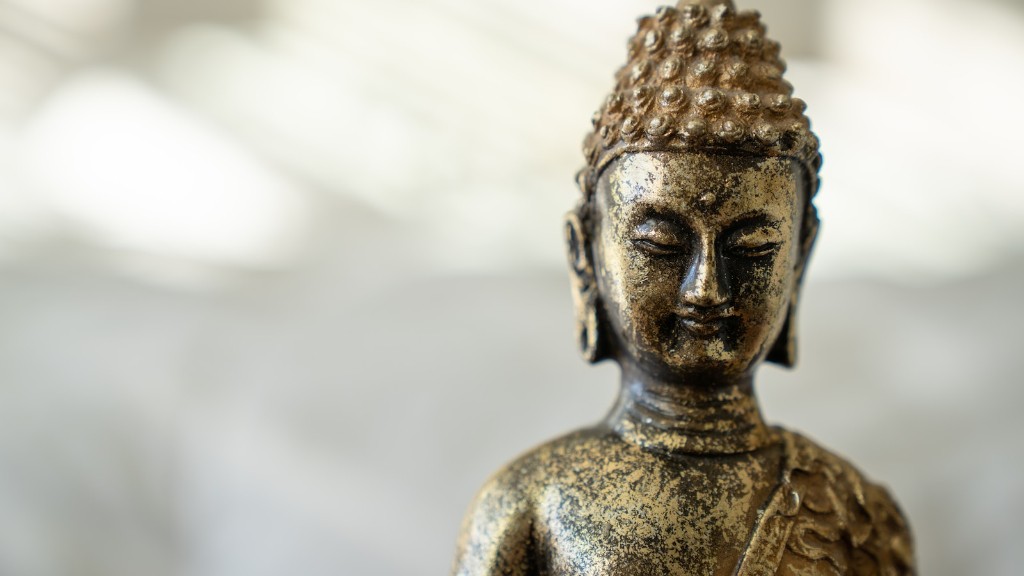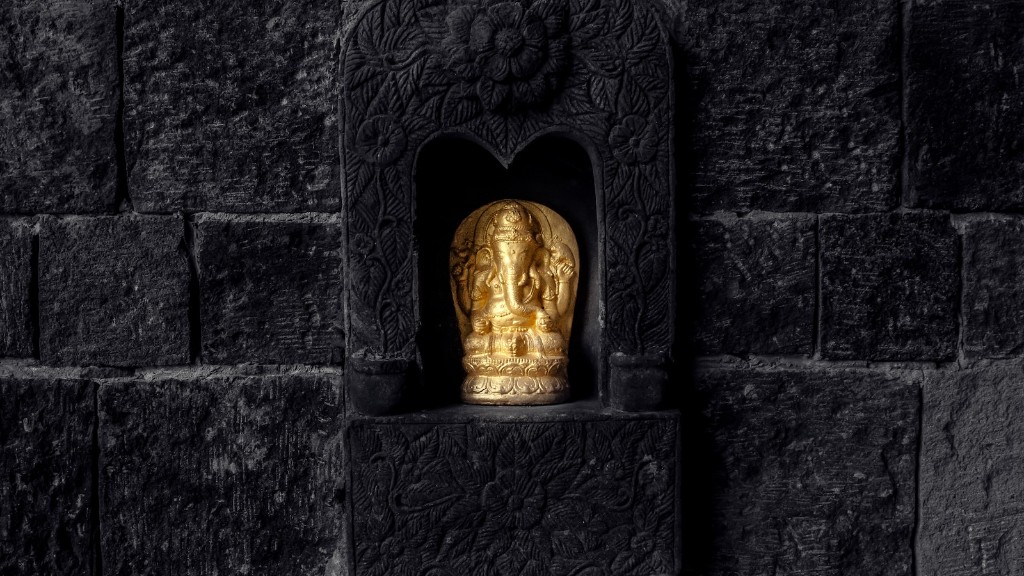Tibetan Buddhism is a spiritual tradition that emphasizes compassion, mind training, and the insights of emptiness. In Tibetan Buddhism, the ultimate goal is to attain buddhahood, a state of complete enlightenment that is free from all sufferings. Tibetan Buddhists believe that everyone has the potential to achieve buddhahood and that the enlightened state is within everyone’s reach.
Tibetan Buddhism originated in the Land of Snows, Tibet, a region of the Himalayan mountains. For centuries, Tibetan Buddhism has been a vital part of Tibetan culture. Today, Tibetan Buddhism is practiced by millions of people around the world.
Tibetan Buddhism is a rich and diverse tradition that encompasses many different schools of thought and practice. The three main schools of Tibetan Buddhism are the Nyingma, Kagyu, and Gelug. Each of these schools has its own distinct methods and practices.
Tibetan Buddhism is founded on the teachings of the historical Buddha, Siddhartha Gautama. The Buddha taught that all beings are capable of achieving enlightenment and that the path to liberation from suffering is through understanding the true nature of reality. The Buddha’s teachings are preserved in various texts, including the Sutras and the Tantras.
Tibetan Buddhism is a form of Buddhism that developed in Tibet and follows the Gelug school of Tibetan Buddhist thought. Tibetan Buddhism is a religion in Tibetan culture, and its practitioners adhere to the Vajrayana teachings of the Buddha.
What is the description of Tibetan Buddhism?
Tibetan Buddhist practice is rich in rituals and spiritual practices. The use of mantras and yogic techniques are central to Tibetan Buddhism. Supernatural beings are prominent in Tibetan Buddhism. Buddhas and bodhisattvas abound, and gods and spirits from earlier Tibetan religions are taken seriously. Tibetan Buddhism is a powerful tradition that can bring great benefit to practitioners.
The divine dharma, or Buddhism, is the religious tradition that Tibetans believe was introduced to them by the Buddha himself. This tradition emphasizes the need to follow the Buddha’s teachings in order to attain enlightenment.
Bon dharma, or Bon, is the indigenous religion of Tibet that predates Buddhism. This tradition focuses on the worship of local deities and the use of shamanistic practices.
The dharma of human beings, or folk religion, is a syncretic tradition that combines elements of both Buddhism and Bon. This tradition is practiced by the majority of Tibetans and emphasizes the need to balance the two traditions in order to achieve spiritual harmony.
What was important about Tibetan Buddhism
Tibetan Buddhism is a unique form of Buddhism that developed in Tibet. It has many similarities with Indian Buddhism, including a strong emphasis on monasticism, a sophisticated scholastic philosophy, and elaborate forms of tantric practice. However, Tibetan Buddhism also has some unique aspects, such as the Dalai Lama, the Tibetan Book of the Dead, and Tibetan Buddhist art.
There is no right or wrong answer when it comes to which type of Buddhism is better. It ultimately depends on what the individual is looking for in a religion. If someone is looking for a complete lifestyle change, then Chinese Buddhism would be the better choice. However, if someone is only looking to change their perspective on life, then Tibetan Buddhism would be a better fit.
What are the core values of Tibetan Buddhism?
Buddhism is a religion that is based on the teachings of the Buddha. It is a religion that emphasizes the importance of finding the truth for oneself and living in a way that is in harmony with nature. Buddhism is a tolerant religion that places emphasis on practical methods for cultivating spiritual awareness. The Buddha taught that the way to achieve peace and happiness is through the practice of loving-kindness, compassion, equanimity, and wisdom.
These are the five elements that make up the material world according to Tibetan Buddhist tradition.
What are the 5 most important concepts in Buddhism?
The precepts are an important part of Buddhist practice, and are meant to develop mind and character to make progress on the path to enlightenment. They are commitments to abstain from killing living beings, stealing, sexual misconduct, lying and intoxication. Within the Buddhist doctrine, these precepts are meant to help practitioners develop compassion, wisdom and self-control.
The Five Precepts are guidelines for living a moral and ethical life. They are:
1. Refrain from taking life
2. Refrain from taking what is not given
3. Refrain from the misuse of the senses
4. Refrain from wrong speech
5. Refrain from intoxicants that cloud the mind.
These precepts help us to live peacefully and harmoniously with others, and to avoid causing harm.
Do Tibetan Buddhists believe in a God
Buddhists believe that there is no one god or deity that is responsible for everything that happens in the world. Instead, they believe that there are many different supernatural beings who can help or hinder people on their path towards enlightenment.
The goal of the Buddhist path is to achieve nirvana, an enlightened state in which the fires of greed, hatred, and ignorance have been quenched. To achieve this goal, one must follow the Eightfold Path, which leads to the ultimate goal of release from the cycle of reincarnation and the suffering that accompanies it.
What do Tibetan Buddhist believe about death?
Buddhist teaching views life and death as a continuum. This means that consciousness (or the spirit) continues after death and may be reborn. Death can be an opportunity for liberation from the cycle of life, death and rebirth.
The Tibetan system is a unique combination of political and religious elements, with a political succession system based on the Buddhist concept of reincarnation. Tibetan culture has been shaped by its long period of relative isolation from the outside world, and this has resulted in a number of strengths. Tibetan culture is known for its rich tradition of art, literature, and philosophy, as well as its unique religion and beliefs.
What are the four sects of Tibetan Buddhism
Tibetan Buddhism is a religion in Tibetan culture that involves the teachings of the Buddha and the path to enlightenment. There are four main schools of Tibetan Buddhism: Nyingma, Kagyu, Sakya, and Gelug. Each school has its own unique traditions and practices.
There are said to be six realms that we pass through in our lives – the Human, Animal, Hell, Heaven, Hungry Ghost and Jealous God Realms. While some people take these realms literally, it is also possible to work with them metaphorically, as metaphors for the different states of mind through which we all pass in a given day.
For example, the Human Realm can represent our more rational, conscious mind, while the Animal Realm can represent our more instinctual, primal side. The Hell Realm can represent feelings of despair, anger and hatred, while the Heaven Realm can represent feelings of love, joy and bliss. The Hungry Ghost Realm can represent feelings of greed, craving and obsession, and the Jealous God Realm can represent feelings of jealousy, envy and competitiveness.
We all experience all of these realms at different times, and it can be helpful to become aware of which realm we are in at any given moment. If we can learn to recognise when we are in a particular realm, we can then start to work with that energy and transform it into something more positive.
What are the 7 factors of Buddhism?
The Seven Factors of Awakening are important mental capacities for Buddhist practice. They are known as “inner wealth” because they are so valuable. The seven factors are mindfulness, investigation, energy, joy, tranquility, concentration, and equanimity.
Food is central to Buddhist practice and tradition. It is prepared as a spiritual exercise with attention to balance, harmony, and delicacy. Conscious eating is followed among all Buddhists, and Buddha advised monks to avoid eating 10 kinds of meat for self-respect and protection: humans, elephants, horses, dogs, snakes, lions, tigers, boars and hyenas.
Final Words
Tibetan Buddhism is a school of Buddhism practiced in Tibet, Mongolia, and the Himalayan region. It is derived from the latest stages of Indian Buddhism and preserves the Tantric status quo of eighth-century India. Tibetan Buddhism is a Vajrayana tradition and includes a large pantheon of deities, often depicted as Tibetan Bodhisattvas. It emphasizes monasticism and the role of the lama in guiding the spiritual development of a practitioner.
Tibetan Buddhism is a religion in exile, from its origins in the Himalayan region of Tibet to its current status in diaspora. Due to its geographical isolation, Tibetan Buddhism has evolved into a distinct form of Buddhism, with its own schools, practices and theories. In recent years, Tibetan Buddhism has gained popularity in the West, due to the efforts of the Dalai Lama and other Tibetan teachers.





